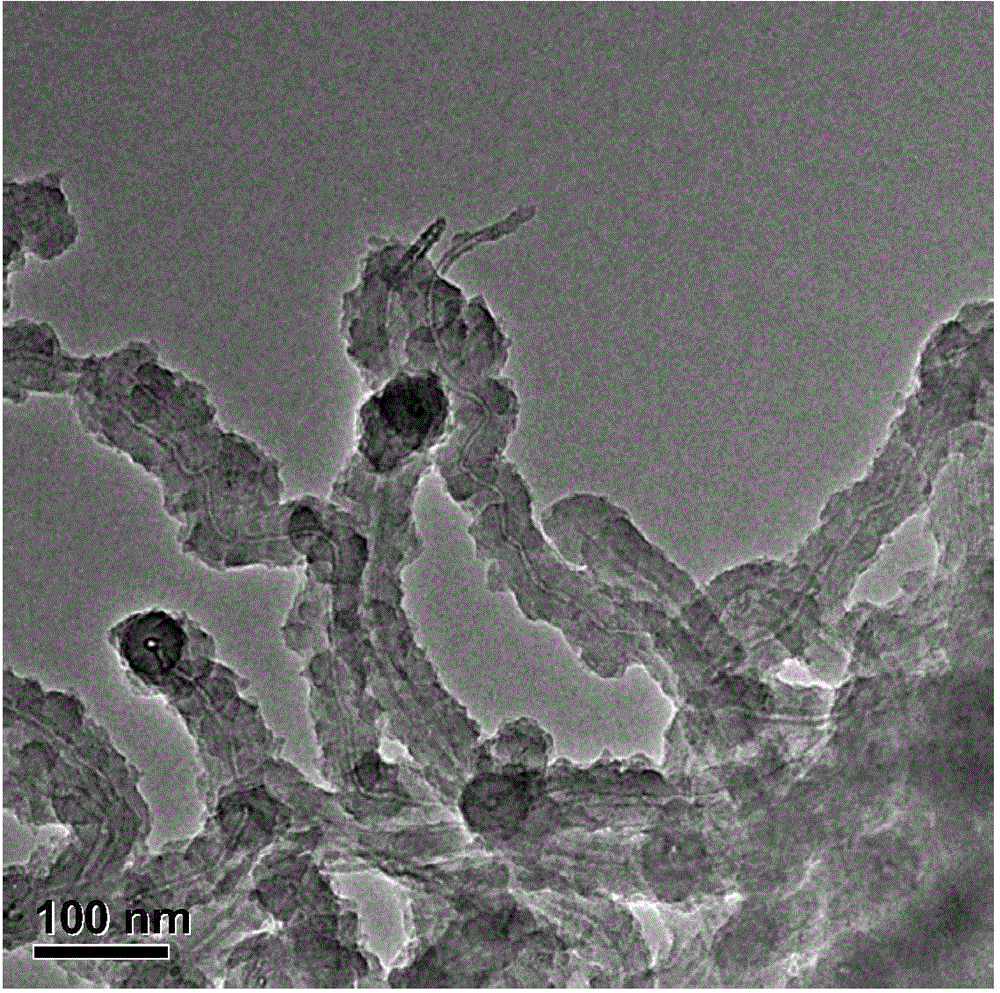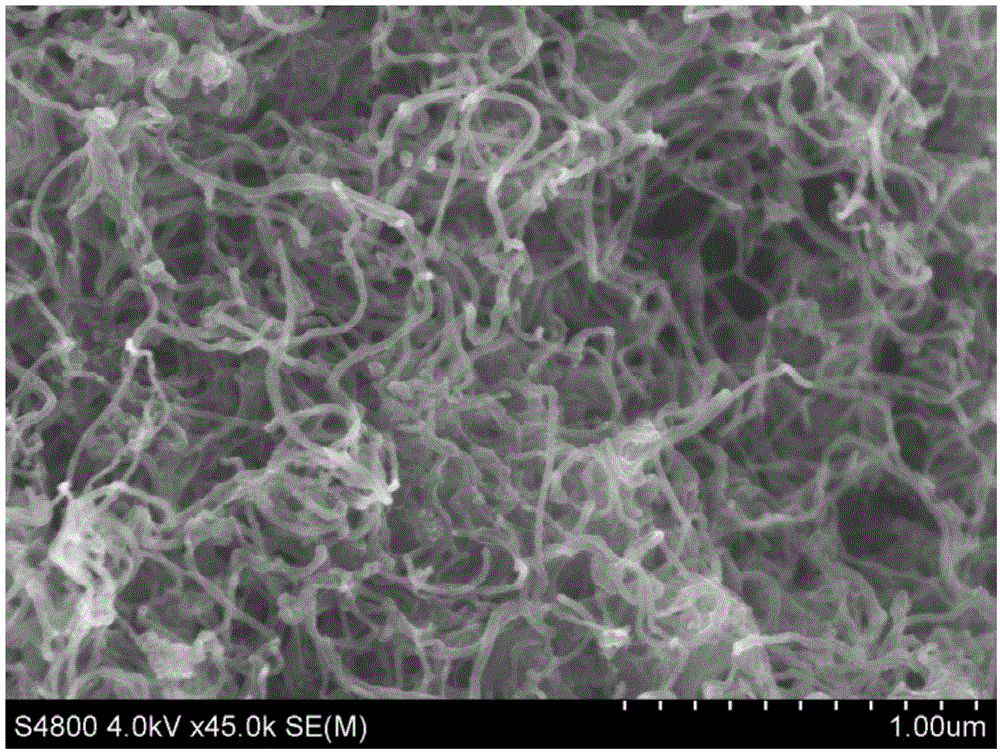Nitrogen-doped porous carbon/sulfur composite material and preparing method and application thereof
A technology of nitrogen-doped porous carbon and composite materials, applied in non-aqueous electrolyte battery electrodes, electrical components, battery electrodes, etc., to achieve good cycle stability, high discharge specific capacity, and enhanced electron and ion transport effects
- Summary
- Abstract
- Description
- Claims
- Application Information
AI Technical Summary
Problems solved by technology
Method used
Image
Examples
Embodiment 1
[0037] (1) Melamine, m-phthalaldehyde, and carbon nanotubes are put into thick-walled pressure-resistant reaction flasks with dimethyl sulfoxide (0.05g / mL according to the concentration of melamine) according to the mass ratio of 100:80:24, After reacting at 180° C. for 3 days under stirring, wash with dichloromethane and separate the solid;
[0038] (2) Put the obtained solid into a tube furnace and adjust the argon flow rate to 0.12 sccm and raise the temperature to 400°C for 5 hours to obtain a nitrogen-doped porous carbon material;
[0039] (3) After mixing the obtained carbon material and elemental sulfur in a mortar at a mass ratio of 2:3, put it into a closed glass tube, raise the temperature to 155°C at a heating rate of 5°C / min and keep it warm for 20h.
[0040] After naturally cooling to room temperature, acetylene black and polyvinylidene fluoride were slurried with NMP at a mass ratio of 8:1:1, mixed uniformly and coated on aluminum foil to obtain the lithium-sulfu...
Embodiment 2
[0042] (1) Put benzidine, m-phthalaldehyde, carbon nanofibers in a mass ratio of 100:120:24, and dimethyl sulfoxide (according to the concentration of benzidine is 0.10g / mL) into a thick-walled pressure-resistant reaction bottle , after reacting at 180° C. for 3 days under stirring, wash with dichloromethane and separate the solid;
[0043] (2) Put the obtained solid into a tube furnace and adjust the argon flow rate to 0.12 sccm, heat up to 600° C. for 3.5 hours, and obtain a nitrogen-doped porous carbon material;
[0044] (3) After mixing the obtained carbon material and elemental sulfur in a mortar at a mass ratio of 3:4, put it into a closed glass tube, raise the temperature to 165°C at a heating rate of 5°C / min and keep it warm for 15h.
[0045]After naturally cooling to room temperature, acetylene black and polyvinylidene fluoride were slurried with NMP at a mass ratio of 8:1:1, mixed uniformly and coated on aluminum foil to obtain the lithium-sulfur battery cathode mate...
Embodiment 3
[0047] (1) Put aniline, benzaldehyde, and carbon nanofibers in a thick-walled pressure-resistant reaction bottle according to the mass ratio of 100:120:24, and dimethyl sulfoxide (0.06g / mL according to the concentration of aniline), and stir After reacting at 180° C. for 3 days, wash with dichloromethane and separate the solid;
[0048] (2) Put the obtained solid into a tube furnace and adjust the argon flow rate to 0.12 sccm, heat up to 800° C. for 4.5 hours, and obtain a nitrogen-doped porous carbon material;
[0049] (3) After mixing the obtained carbon material and elemental sulfur in a mortar at a mass ratio of 4:3, put it into a closed glass tube, raise the temperature to 185°C at a heating rate of 5°C / min and keep it warm for 15 hours.
[0050] After naturally cooling to room temperature, acetylene black and polyvinylidene fluoride were slurried with NMP at a mass ratio of 8:1:1, mixed uniformly and coated on aluminum foil to obtain the lithium-sulfur battery cathode ma...
PUM
 Login to View More
Login to View More Abstract
Description
Claims
Application Information
 Login to View More
Login to View More - R&D
- Intellectual Property
- Life Sciences
- Materials
- Tech Scout
- Unparalleled Data Quality
- Higher Quality Content
- 60% Fewer Hallucinations
Browse by: Latest US Patents, China's latest patents, Technical Efficacy Thesaurus, Application Domain, Technology Topic, Popular Technical Reports.
© 2025 PatSnap. All rights reserved.Legal|Privacy policy|Modern Slavery Act Transparency Statement|Sitemap|About US| Contact US: help@patsnap.com



